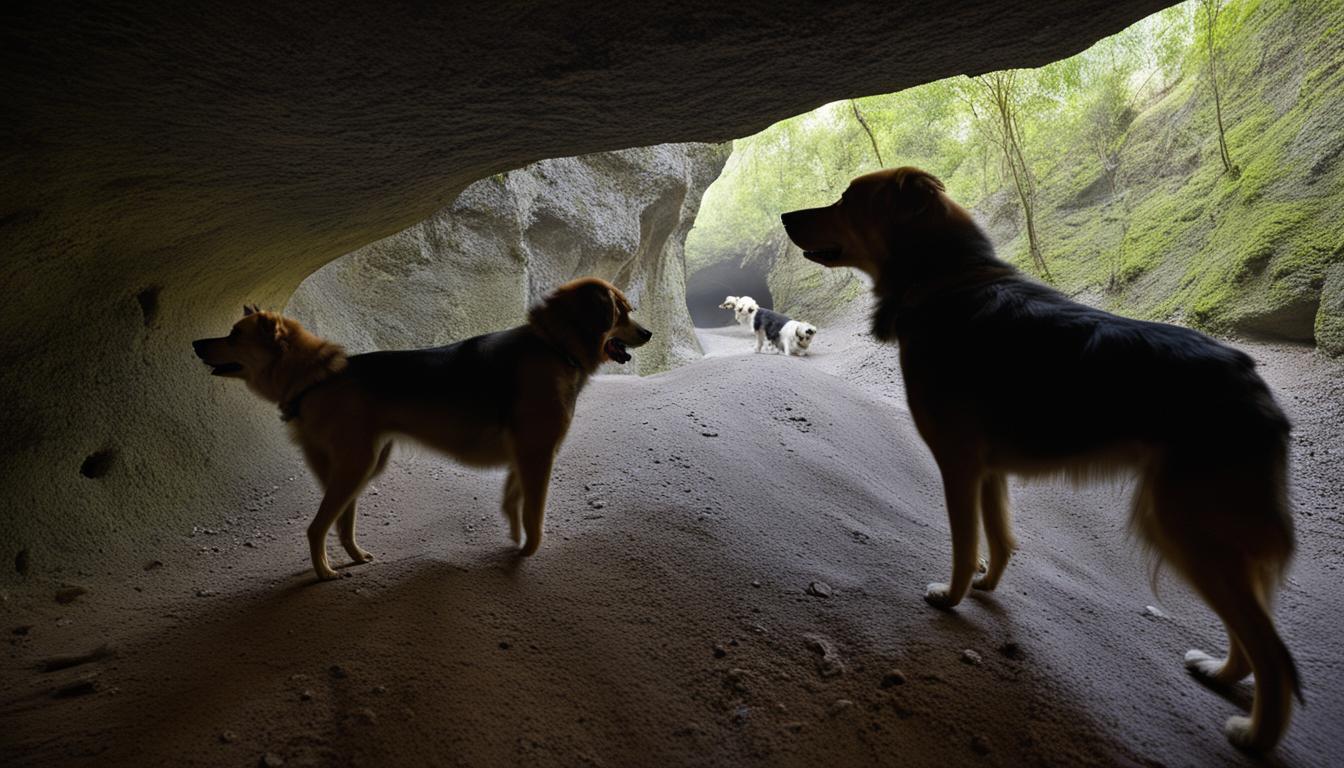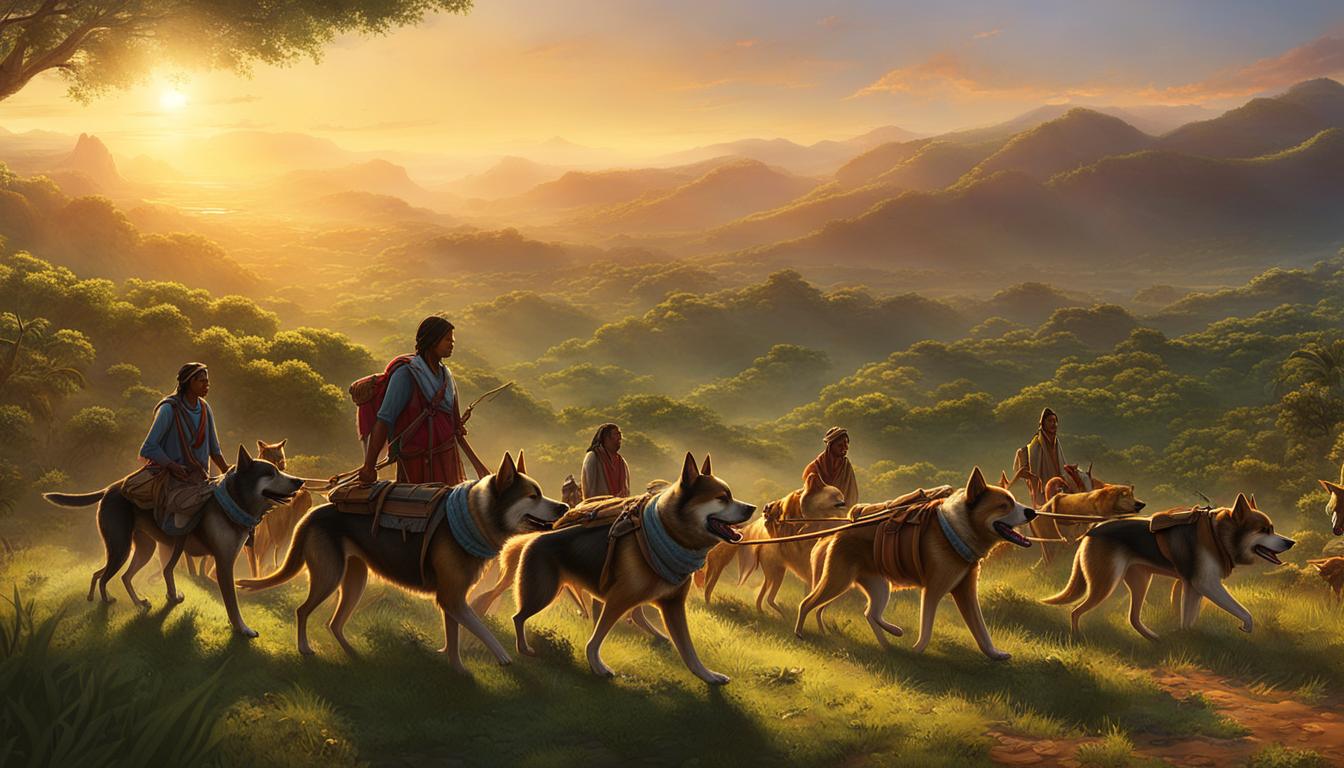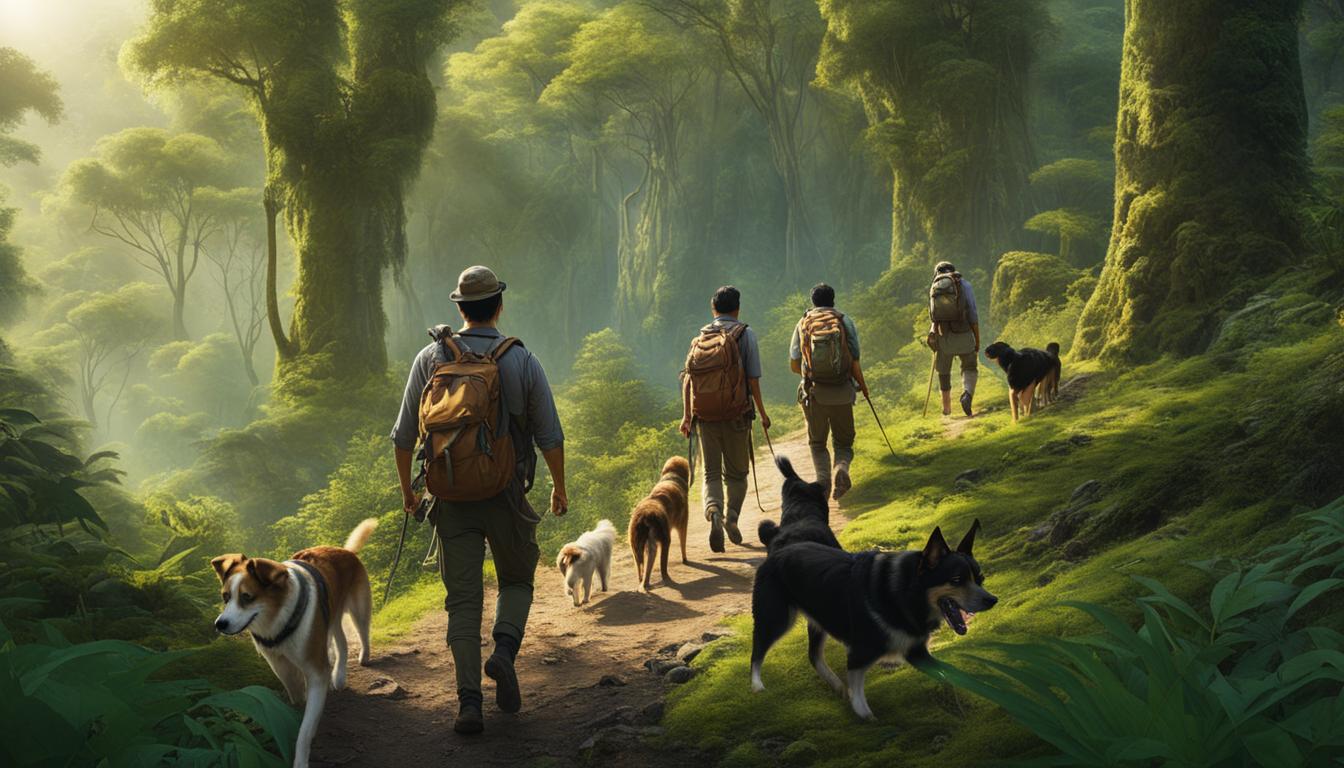Welcome to our exploration of the Australian Outback, where we’ll delve into the fascinating role that dogs have played in these harsh expeditions. From providing companionship to aiding in survival, canines have proven to be invaluable assets in navigating the wild and rugged terrain of the Australian wilderness.
Key Takeaways:
- Dogs have been trusted companions in Australian exploration throughout history.
- Their adaptability and resourcefulness have allowed them to thrive in the challenging Outback environment.
- Canines have aided in hunting, tracking, and even finding water sources in the arid Outback.
- The dingo, a unique native dog species, holds cultural and ecological significance in the Australian wilderness.
- Efforts to preserve the pure dingo breed while mitigating potential risks are ongoing.
The Use of Dogs in Outback Hunting and Tracking
Dogs have played a crucial role in Outback expeditions, particularly in hunting and tracking activities. These loyal and skilled canines have been invaluable guides and companions, aiding in the survival of explorers in the harsh and unforgiving Australian wilderness.
Among the indigenous peoples of the Outback, dogs have been used as hunting partners for centuries. The Mbuti people of the Democratic Republic of Congo, for example, rely on dogs to locate game in the dense tropical forests. These dogs accompany hunters on their expeditions, using their powerful sense of smell to track and locate potential prey. Working together, dogs and hunters are able to flush out game, bringing it within range and ensuring a successful hunt.
In other parts of the world, such as North America, dogs have been utilized as pack animals by hunter-gatherer societies like the Kaska. These dogs help carry the group’s belongings, enabling them to extend their range and travel between dwelling sites. The dogs’ strength and endurance make them invaluable assets in navigating the vast and rugged terrain of the Outback.
“Dogs have been our trusty companions in Outback expeditions, guiding us through the wilderness and aiding in our survival,” says renowned explorer, John Rivers. “Their keen senses and unwavering loyalty have made them indispensable partners in our quest to conquer the Outback.”
From tracking game to carrying supplies, dogs have proven their ability to adapt and contribute to the success of Outback expeditions. Their unique skills and unwavering loyalty make them vital members of any exploration team venturing into the Australian wilderness.
| Role | Benefits |
|---|---|
| Hunting Partners | Assist with tracking, flushing out prey, and ensuring successful hunts |
| Pack Animals | Carry supplies, enabling explorers to travel further and more efficiently |
| Guides | Navigate the challenging terrain of the Outback, ensuring explorers stay on course |
| Companions | Provide emotional support and companionship during long and arduous expeditions |
As Outback expeditions continue to push the boundaries of exploration, dogs will undoubtedly remain indispensable partners, aiding in survival and guiding adventurers through the Australian wilderness.
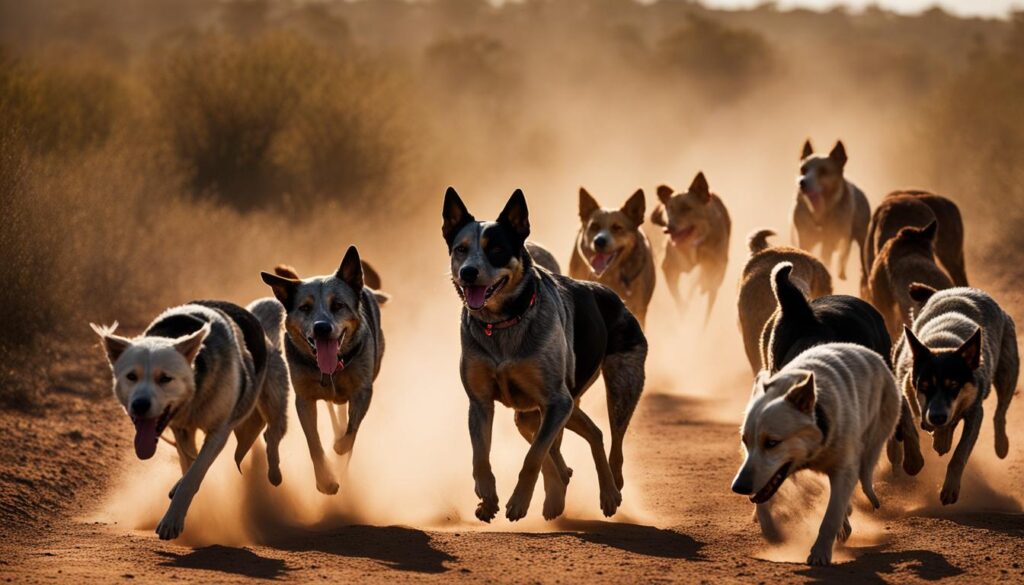
Dogs as Working Companions in the Australian Wilderness
Dogs have played a crucial role as working companions in the historic Outback journeys of Australia. These loyal canines have proved their worth by assisting explorers and travelers in navigating through the challenging and wild terrains of the Australian wilderness. From hunting and trapping to water divining, dogs have showcased their versatility and resourcefulness in various roles, making them indispensable companions for those venturing into the Outback.
Dogs in Hunting and Trapping
Throughout history, dogs have been instrumental in hunting and trapping game during Outback expeditions. One example is the Round Lake Ojibwa of Northern Ontario, who utilized dog teams to hunt and lay traps in the snowy climate. These teams were able to cover vast territories, carry heavy loads, and bring back a substantial amount of game to support the community.
Dogs have also been employed as efficient trackers, guiding their human companions to locate and pursue prey. The combination of their powerful sense of smell and agility has made them valuable partners in the hunting process, ensuring a successful expedition in the Australian wilderness.
Water Divining and Other Roles
In addition to hunting, dogs have served in various other roles during Outback journeys. The arid nature of the Australian wilderness can present challenges in finding water sources, but dogs have proven to be skilled water diviners, guiding their human counterparts to vital water reserves. Their ability to detect underground water supplies has been invaluable in ensuring the survival and well-being of explorers and their teams.
Furthermore, dogs have assisted in tasks such as carrying essential supplies, providing warmth during cold nights, and offering companionship to those traveling through the vast and isolated Outback. Their presence not only contributes to the physical aspects of the journey but also provides emotional support and companionship in the face of challenging circumstances.
Table: Dogs in Historic Outback Journeys
| Role | Examples |
|---|---|
| Hunting and Trapping | Round Lake Ojibwa of Northern Ontario |
| Tracking | Various Indigenous communities |
| Water Divining | Mixed Indigenous communities |
| Carrying Supplies | Various explorers and settlers |
The table above showcases some examples of the roles dogs have played in historic Outback journeys. These canines have been trusted companions, contributing to the success and survival of those embarking on expeditions in the Australian wilderness.
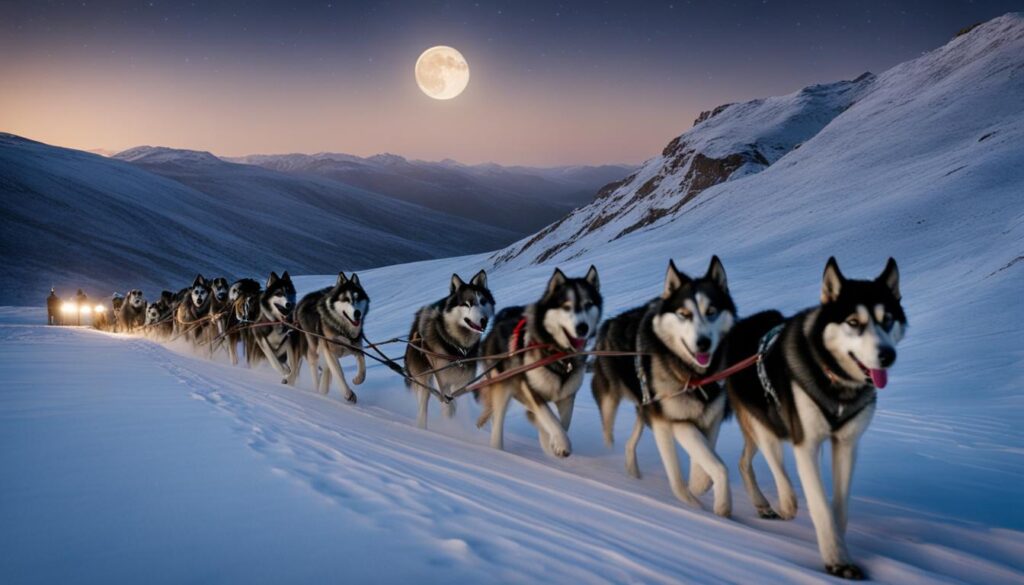
Dingoes in the Outback: Navigating the Australian Wilderness
The Australian Outback is home to a unique and fascinating canine species known as the dingo. These wild dogs have a long history of coexistence with the indigenous Aboriginal peoples, serving as companions and aids in their expeditions through the rugged terrain of the Outback. Dingoes have developed remarkable survival skills and navigation abilities, making them essential in exploring the vast and untamed wilderness.
The dingo’s role in Australian Outback exploration cannot be understated. With their keen senses and instinctual knowledge of the land, dingoes have proven to be valuable guides, leading humans through treacherous landscapes and helping them navigate challenging conditions. Their exceptional tracking abilities enable them to locate water sources and prey, ensuring the survival of both humans and dingoes alike.
However, the presence of dingoes in the Outback has also sparked controversy. The mixing of dingo genes with other dog breeds has raised concerns about the preservation of the pure dingo breed. As a result, there have been debates surrounding the domestication of dingoes as household pets. While some argue for their domestication, citing their intelligence and loyalty, others highlight the potential risks associated with their aggressive instincts resurfacing as they mature.
| Pros | Cons |
|---|---|
| Intelligent and loyal | Potential aggression |
| Adapted to Outback conditions | Threat to pure dingo breed |
| Effective guides and navigators | Controversial domestication debates |
The conservation of purebred dingoes and their cultural and ecological significance in the Australian wilderness is a crucial matter that requires careful consideration. Efforts are being made to protect and preserve the unique genetic heritage of dingoes while ensuring the safety and well-being of both humans and dingoes in their interactions in the Outback. Striking a balance between exploration and conservation is key to maintaining the delicate harmony between dingoes and the Australian wilderness.
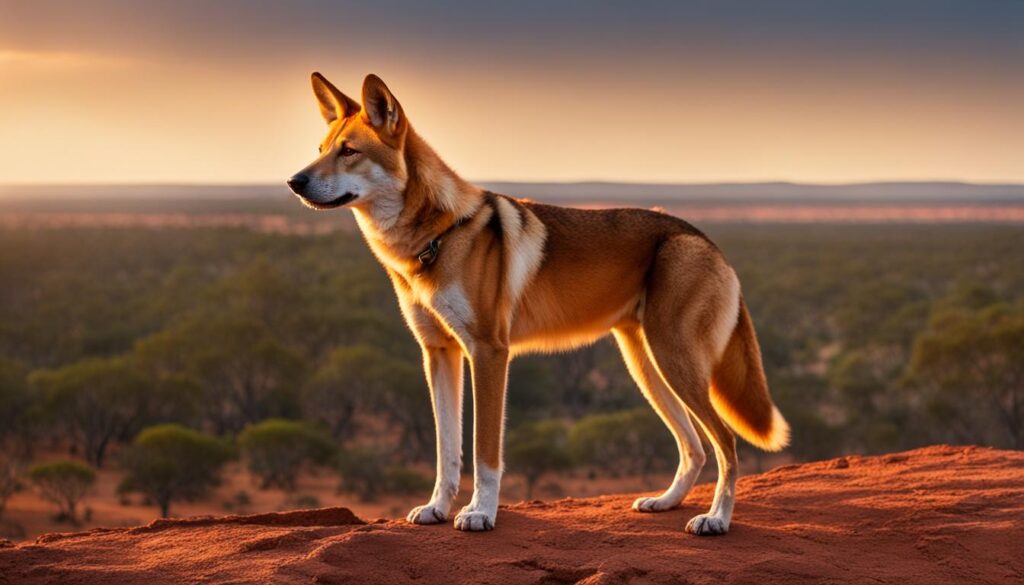
In conclusion, dingoes play a vital role in navigating the Australian Outback, serving as guides, companions, and fellow explorers in this vast and challenging landscape. Their innate navigation skills, tracking abilities, and adaptability make them integral to Outback expeditions. However, the conservation and preservation of the pure dingo breed pose unique challenges due to genetic mixing and debates surrounding their domestication. It is essential to find a balance that respects both the cultural and ecological significance of dingoes while ensuring their place in the ever-changing Australian wilderness.
Conclusion
Dogs have been your steadfast companions in the vast and rugged Australian Outback. From serving as guides and working animals to being loyal companions on your adventures, canines have played a vital role in the exploration of this remarkable terrain.
In the harsh conditions of the Outback, dogs have showcased their adaptability and resourcefulness. Whether it’s hunting alongside you, tracking down prey with their powerful sense of smell, or even divining water sources to quench your thirst in this arid land, dogs have proven to be indispensable allies.
However, the conservation of the dingo, a unique native dog species, poses challenges. Mixing their genes with other breeds and debates about their domestication have raised concerns about the preservation of the pure dingo breed. Striking a balance between preserving their cultural and ecological significance and addressing these concerns is crucial.
As you embark on your future Outback adventures, remember the incredible contributions that dogs have made throughout history. They are more than companions; they are your trusted guides and true friends in the exploration and understanding of this awe-inspiring wilderness.
FAQ
How long have dogs been used in Australian Outback expeditions?
Research suggests that the relationship between humans and dogs dates back around 14,700 years, with evidence of domestication.
What roles have dogs played in hunting during Outback expeditions?
Dogs have been used to locate and track game, flushing out prey and bringing it within range for hunters.
How have dogs assisted in historic Outback journeys?
Dogs have served as working companions, carrying resources, assisting in hunting and trapping, and even divining water sources in the arid Outback.
What is the significance of dingoes in the Australian wilderness?
Dingoes have been companions in hunting expeditions for Aboriginal peoples, but there are debates about their domestication and conservation due to mixing with other breeds.
Are there concerns about domesticating dingoes?
Yes, their aggressive instincts can resurface as they grow older, posing risks to owners and raising concerns about the preservation of the pure dingo breed.


